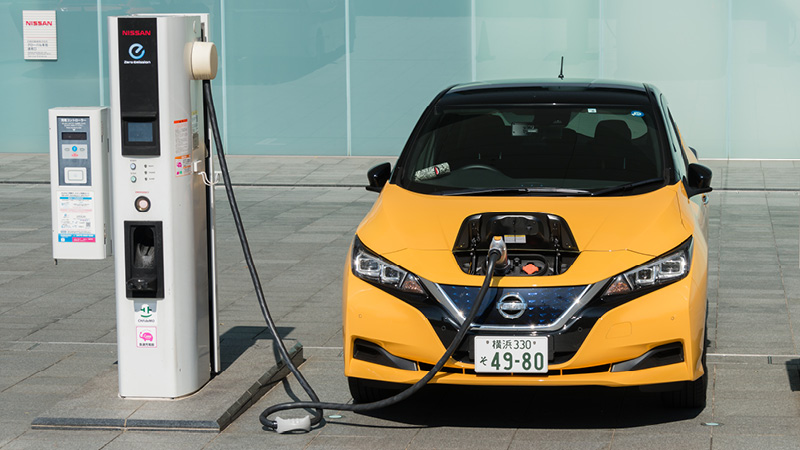

Battery electric vehicles
Light duty vehicles (LDVs) such as passenger cars and vans are responsible for 51% of CO2 emissions from the transport sector (4.8 GtCO2 on a well-to-wheel, or WTW, basis). WTW emissions include emissions in fuel production and transportation, as well as fuel combustion in the vehicle. Under the International Energy Agency’s Reference Technology Scenario (a scenario that would result in a 2.7°C temperature increase by 2100), WTW CO2 emissions from light duty vehicles would grow by 14% in the period from 2014 to 2050. LDVs are also a major source of air pollution in cities.
The electrification of LDVs is important to reducing the environmental impacts of the transport sector. Battery electric vehicles (BEVs) are vehicles with a fully electric drivetrain powered by electricity stored in a rechargeable battery. BEVs and charging infrastructure are established technologies. Most major car manufacturers have already launched or are developing BEVs.
What are the benefits?
The avoided emissions from BEVs compared to conventional internal combustion engine (ICE) vehicles are largely dependent on the carbon intensity of a region’s electricity grid. On a WTW basis, the emissions reductions from a BEV compared to an equivalent ICE are on average: 65% in Europe, 63% in North America and 48% in China. BEVs also bring additional benefits, such as lower repair and maintenance costs, and can offer flexibility services to help stabilize the electricity grid. In addition, emissions regulations in cities do not impact them.
What are the barriers?
One of the main barriers to BEV uptake is the higher upfront costs compared to ICEs. On a total cost of ownership basis, BEVs are already competitive with ICEs in some instances; however, many organizations do not make capital expenditure decisions based on total cost of ownership. In addition, insufficient public charging infrastructure in many areas limits the scaling up of BEVs.
What do we need to scale up?
- The adoption of policies such as vehicle purchase subsidies, vehicle emissions standards and carbon pricing to strengthen the business case
- Business models offering battery leasing and operating leases to help companies overcome the barrier of higher upfront costs of BEVs
More business cases
Biofuels in shipping
According to the International Council on Clean Transportation, the shipping sector accounted for 3% (932 MtCO2) of emissions in 2015. The International Energy Agency’s Reference Technology Scenario (a scenario that would result in a 2.7°C temperature increase by...
Building energy management systems
Direct and indirect CO2 emissions from buildings account for 28% of energy-related CO2 emissions, according to Towards a zero-emission, efficient, and resilient buildings and construction sector Global Status Report 2017 by UN Environment and the International Energy...
Concentrated solar heat
CO2 emissions from industry account for 24% of global energy-related CO2 emissions (8.3 GtCO2), according to the International Energy Agency’s Energy Technology Perspectives 2017. Concentrated solar heat (CSH) technologies are a low-carbon solution to meeting medium...

Copyright © 2022
World Business Council for Sustainable Development
All rights reserved | Privacy Policy



